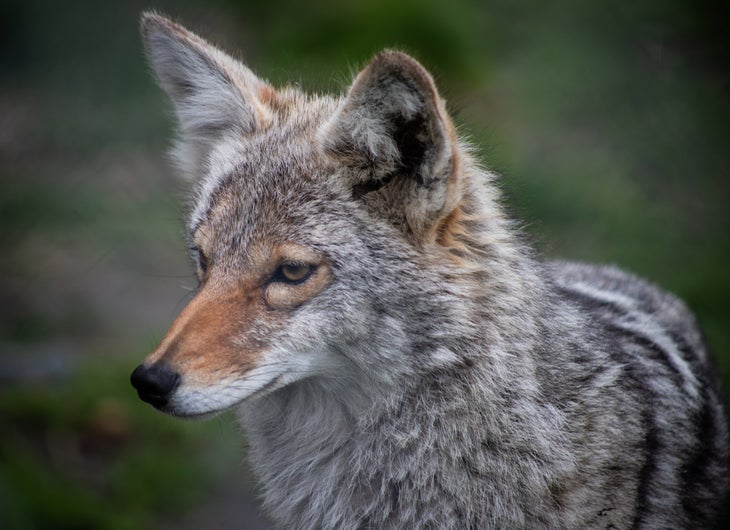Heading out the door? Read this article on the new Outside+ app available now on iOS devices for members! Download the app.
The coyote pup in the picture is small, barely large enough to halfway fill the live trap containing it. It sits with its back pressed against one wall, ears perked, mouth halfway open in mid-pant, fuzzy ears perked, eyes staring straight ahead. Around its neck is a chunky black collar, with a leash hanging off of it.
The picture comes from wildlife authorities in eastern Colorado, where the pup, who authorities say was habituated to humans after being fed by people, apparently bit a woman. With the animal now dead and the human victim going through rabies protocols, wildlife officials are holding up the incident as the latest example of why members of the public shouldn’t attempt to interact with wildlife, however small and cute.
Colorado Parks and Wildlife said that it first became aware of the incident when the bite victim’s doctor notified them; in a press release, the agency said that the victim and several other people in the town of Yuma had been attempting to play with the pup when it bit her. While the bite only left minor injuries, the woman had to go through rabies protocol, receiving a painful and expensive post-exposure course of the human rabies vaccine to prevent her from potentially contracting the fatal virus. When CPW officers arrived in Yuma to seize the animal, they found it at another individual’s shop, wearing a collar and leash.
The bite victim is expected to make a full recovery, but the same can’t be said for the coyote pup: In keeping with standard protocol for wildlife bites, CPW euthanized the animal and took a brain sample to test for rabies. The results are still pending.
Feeding big game animals, which include coyotes and foxes, is punishable under Colorado law by fines starting at $100. A CPW spokesperson said on Thursday that while the agency had not issued any citations in the case, the investigation was still ongoing.

From a conservation standpoint, the loss of one coyote pup is negligible. More than any other North American predator, coyotes have thrived over the past 120 years. In 1900, it was rare to see them east of the Great Lakes; now, thanks to the near-extinction of the wolves they competed with and the expansion of food-rich human habitations, coyotes are present in every state except for Hawai’i. The United States kills 400,000 of the shy canids annually with no major effect on their population, National Geographic writes.
But as the built human habitat continues to expand and outdoor recreation becomes more popular than ever, some people keep treating wildlife like pets no matter how much authorities, educators, and peers warn them not to. That should worry us. For one, wild animals pose a real danger no matter how cute they are: Just ask the Utah runner who got chased off by a mother mountain lion after pulling out his phone to take pictures of her kittens, or the Yellowstone tourists who every year get tossed around like pinballs after approaching bison. And even when humans get away without suffering serious consequences, as this case shows, the animals they’ve interacted with often don’t.
“In these cases, wildlife is always the ultimate loser,” CPW said.
